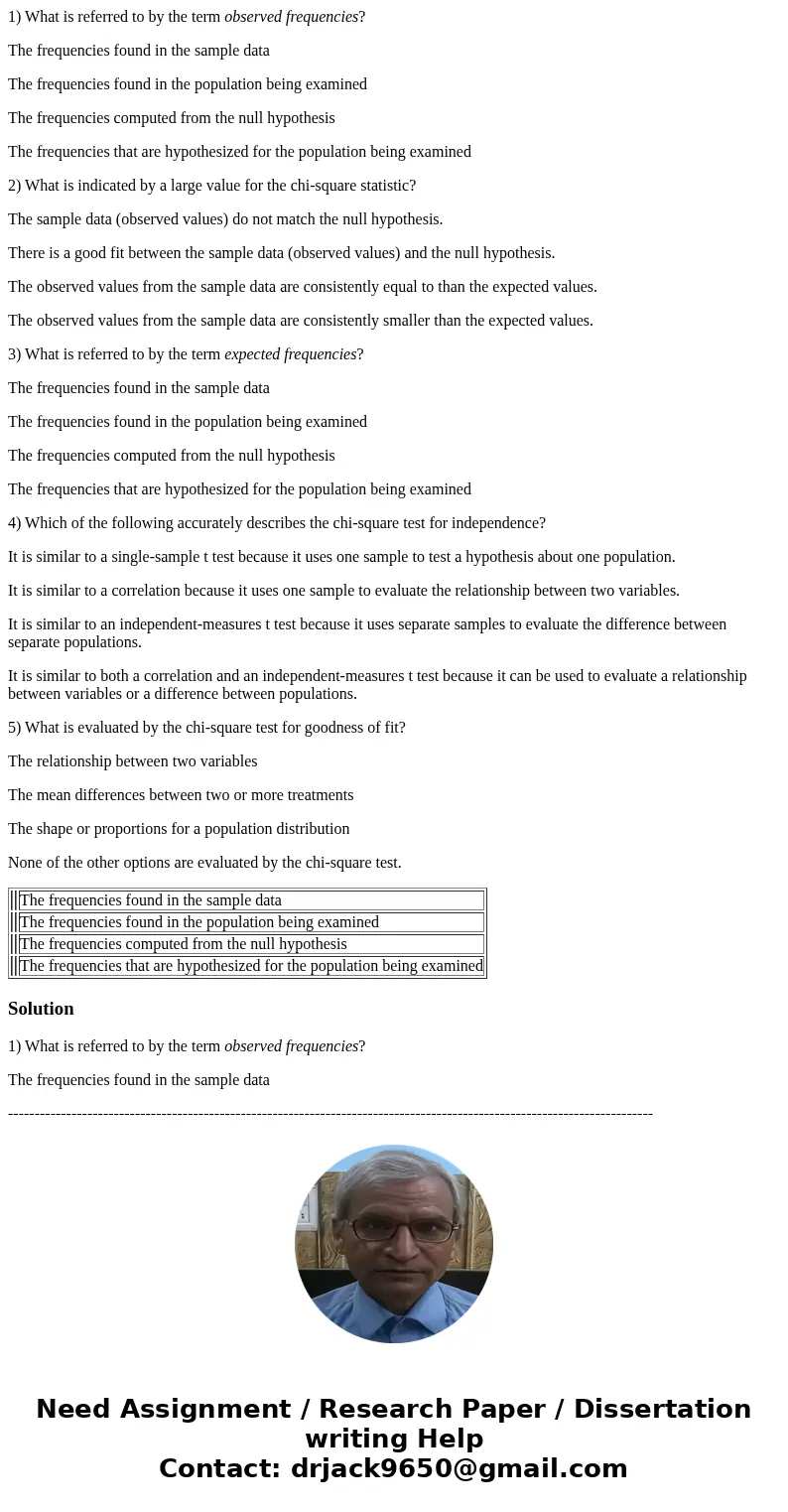1 What is referred to by the term observed frequencies The f
1) What is referred to by the term observed frequencies?
The frequencies found in the sample data
The frequencies found in the population being examined
The frequencies computed from the null hypothesis
The frequencies that are hypothesized for the population being examined
2) What is indicated by a large value for the chi-square statistic?
The sample data (observed values) do not match the null hypothesis.
There is a good fit between the sample data (observed values) and the null hypothesis.
The observed values from the sample data are consistently equal to than the expected values.
The observed values from the sample data are consistently smaller than the expected values.
3) What is referred to by the term expected frequencies?
The frequencies found in the sample data
The frequencies found in the population being examined
The frequencies computed from the null hypothesis
The frequencies that are hypothesized for the population being examined
4) Which of the following accurately describes the chi-square test for independence?
It is similar to a single-sample t test because it uses one sample to test a hypothesis about one population.
It is similar to a correlation because it uses one sample to evaluate the relationship between two variables.
It is similar to an independent-measures t test because it uses separate samples to evaluate the difference between separate populations.
It is similar to both a correlation and an independent-measures t test because it can be used to evaluate a relationship between variables or a difference between populations.
5) What is evaluated by the chi-square test for goodness of fit?
The relationship between two variables
The mean differences between two or more treatments
The shape or proportions for a population distribution
None of the other options are evaluated by the chi-square test.
| The frequencies found in the sample data | ||
| The frequencies found in the population being examined | ||
| The frequencies computed from the null hypothesis | ||
| The frequencies that are hypothesized for the population being examined |
Solution
1) What is referred to by the term observed frequencies?
The frequencies found in the sample data
--------------------------------------------------------------------------------------------------------------------------
2) What is indicated by a large value for the chi-square statistic?
The sample data (observed values) do not match the null hypothesis.
--------------------------------------------------------------------------------------------------------------------------
3) What is referred to by the term expected frequencies?
The frequencies computed from the null hypothesis
--------------------------------------------------------------------------------------------------------------------------
4) Which of the following accurately describes the chi-square test for independence?
It is similar to both a correlation and an independent-measures t test because it can be used to evaluate a relationship between variables or a difference between populations.
--------------------------------------------------------------------------------------------------------------------------
5) What is evaluated by the chi-square test for goodness of fit?
The shape or proportions for a population distribution.


 Homework Sourse
Homework Sourse